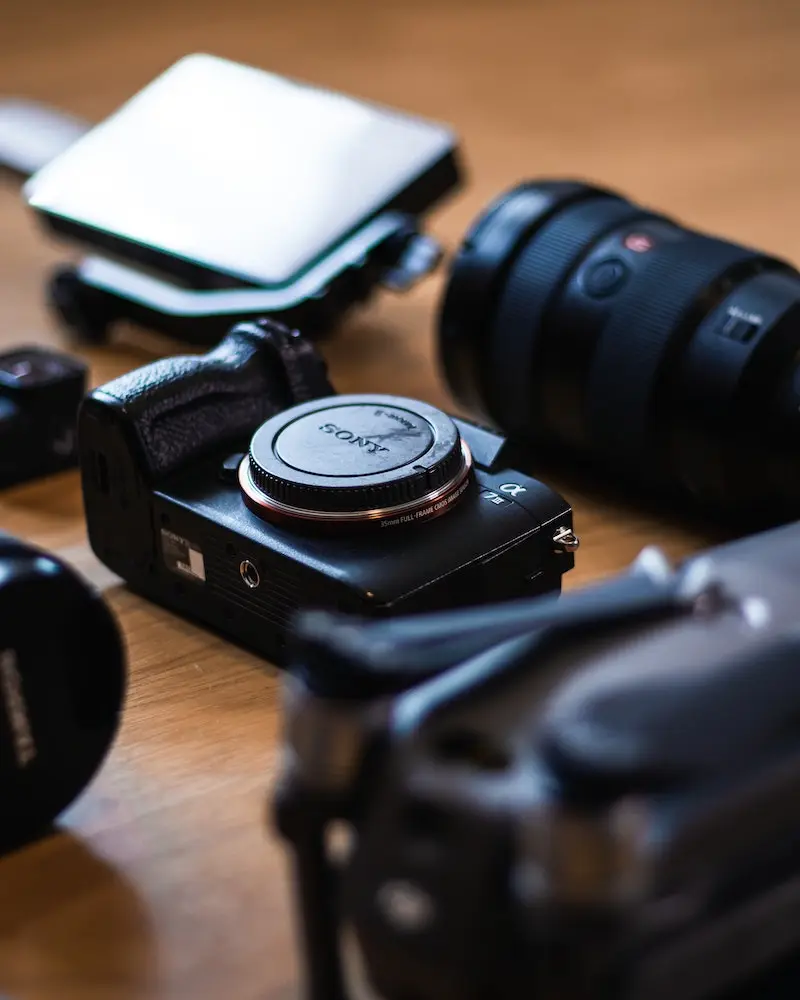The proliferation and use of smartphones with built-in cameras gives the greatest number of people the possibility to take pictures and immortalize events of their choice.
However, simply being able to use the flash on a smartphone does not make everyone a photographer, as professional photography is an art and a profession in its own right. To qualify, you must train, equip yourself with the best tools of the professional photographer and obey the specific codes of the discipline.
From the training required to practice the profession of photographer to the equipment that makes up the photographer’s toolbox, discover some parts of the professional photographer’s universe.
Table of contents
How can you train to become a professional photographer?
The photography market has seen many self-taught photographers who practice the discipline out of a passion and love for the image. However, training to become a professional photographer is becoming increasingly important, especially if you want to master the most advanced photography techniques.
To this end, various schools and institutes propose to train aspirants to the profession, through specific training offers. Professional photographers can earn their stripes by signing up for:
- a professional baccalaureate , which lasts three years of training at the end of which one can already work as a professional photographer;
- A “Brevet de Technicien Supérieur” (BTS) vocational training certificate, corresponding to the Bac + 2 to gain experience in photography techniques;
- a BTS in audio-visual professions;
- a bachelor’s degree corresponding to a Bac + 3.
To gain even more expertise, you can register for a Bac + 5, either a master’s degree in decorative arts or photography.
What equipment does the professional photographer use?
Professional photography is a practical activity that requires specific equipment. In general, to practise the profession, it is necessary to equip yourself with:
- a camera, i.e. a compact, reflex, hybrid or bridge digital camera;
- a lens, which may be standard, wide-angle, fish eye, telephoto, macro, off-center, lensbaby, etc.;
- studio equipment, including a light modifier, a tripod, backgrounds, background supports, a studio flash, etc.;
- accessories, such as an L-bracket, a bag or a photo case, filters, a blower, a remote control, etc.;
- electronic and computer equipment, including a computer, photo editing tools, etc.

Which insurance policies should you take out as a professional photographer?
As is the case in other trades, the profession of photographer must be secured by a certain number of assurances, some compulsory, others highly recommended or optional. An overview of the best insurance policies for photographers.
Camera insurance
Camera insurance is offered by some insurance companies to cover the photographer’s work equipment. It compensates the owner in the event of loss, fall, water damage, breakdown, oxidation, theft, etc.
Professional liability insurance
Highly recommended to professional photographers, professional liability insurance covers material, immaterial and bodily damage caused by the photographer when exercising their profession.
Ideally, a photographer’s professional liability insurance policy should cover loss of photos, transmission of a computer virus, delay in delivery of a service, quality of service deemed inadequate by a client, and violation of intellectual property.
Civil liability insurance
Recommended for professional photographers who work as contractors, civil liability insurance covers the professional’s business outside of the direct services they provide. It can be used in case of damage to a client’s property during a photo shoot or in case of unintended damage caused to a customer in a studio.
Property and casualty insurance
Considered to be the most comprehensive insurance offer for a professional photographer, property and casualty insurance includes a large number of guarantees. These include professional liability insurance and, in some cases, civil liability insurance, property insurance, property damage insurance, legal protection, etc.
Apart from these insurance policies, the professional photographer can secure their activities with other types of insurance policies, such as:
- business interruption insurance, which is optional but recommended to cover any loss of income in the event of a claim;
- mutual health insurance, compulsory if you have employees, but optional if you are self-employed;
- provident benefits, which are optional but recommended for self-employed persons;
- car insurance, which is compulsory when a vehicle is used in the course of your business.
How can you protect your photos on the Internet?
Faced with the recurring problems of theft, impersonation and counterfeiting on the Internet and social networks, it is imperative, as a photographer, to learn how to protect your photos online. To do this, various methods are to be used.
Publish your images in low definition
Photo thieves are most often looking for clear, crisp images, in other words, high-definition photos. To catch them off guard, it is advisable to only publish images that are no larger than 1,500 pixels and less than one megabyte.
Use the watermark technique
In addition to being a subtle way to advertise yourself, the watermarking technique is also an effective way to protect your images on the Internet. It consists of writing your name or nickname as a photographer on a part of the photo. Software, such as Photoshop and Lightroom, can be used to create the watermark.
Use metadata
Less visible and therefore more discreet than the watermark, the metadata technique consists in filling in the International Press Telecommunications Council (IPTC) fields with all the information related to a photo before publishing it. The information to be mentioned includes the technical characteristics of the image, the model of camera used, the exposure time, the resolution, the location, the copyright notice, the contact details of the author, etc.
Disable the right click option
This fairly practical protection technique consists of deactivating the right mouse click using Javascript scripts. This means that no user can click on a published image to copy it.
Use private galleries
This image protection trick consists of requiring users to use a direct link, a password or an authorization by personal identifiers before accessing the published photos.
Show legal notices
The posting of legal notices is a method of prevention against any attempt of theft perpetrated by people who are sometimes naive and under-informed about copyright. It consists of accompanying the photos that you publish with the conditions that must be respected if they are to be reused.
How can you protect your photos on the Internet?
Before a photo is printed on paper or published on the Internet, it is important to choose an export format based on the intended use of the image. Various formats are available to choose from.
The JPEG or JPG format
Nicknamed a destructive format because of its tendency to compress image information, the Joint Photographic Experts Group (JPEG) format is mostly used on the Internet. Universal and standard, it can be read by all IT tools, from computers to mobile phones to tablets.
It is used in particular to send photos by email or slideshows. On the other hand, the JPEG format is not recommended if you want to do photo editing or post-processing, because it does not allow you to adjust the color balance.
The TIFF format
Created in 1986, the Tagged Image File Format is ideal for preserving the quality of an image during export, since it does not compress the image data.
However, with such a format, we have huge files that can be several tens of megabytes. Clearly, this is a particularly storage-space-hungry format. TIFF files are therefore preferred when you want to print photos on paper.

PNG format
Portable Networks Graphics is a format that has the advantage of preserving the pixelation and therefore the quality of the images during export. It can be used when you want to share photos on social networks, send an image by email or print a photo.
Apart from these common formats, images can be exported in other formats, such as:
- Graphics Interchange Format (GIF), used to export animated images;
- Photoshop Document (PSD), used in the context of transferring images between collaborators on a common creative project;
- Adobe Illustrator Document (Ai), which is a format that allows the recipient to access and rework the source image;
- etc.
Despite the multiplicity of formats, JPEG and TIFF are the most common and convenient in the photographic world, as they are relatively simple to set up and easily readable.









